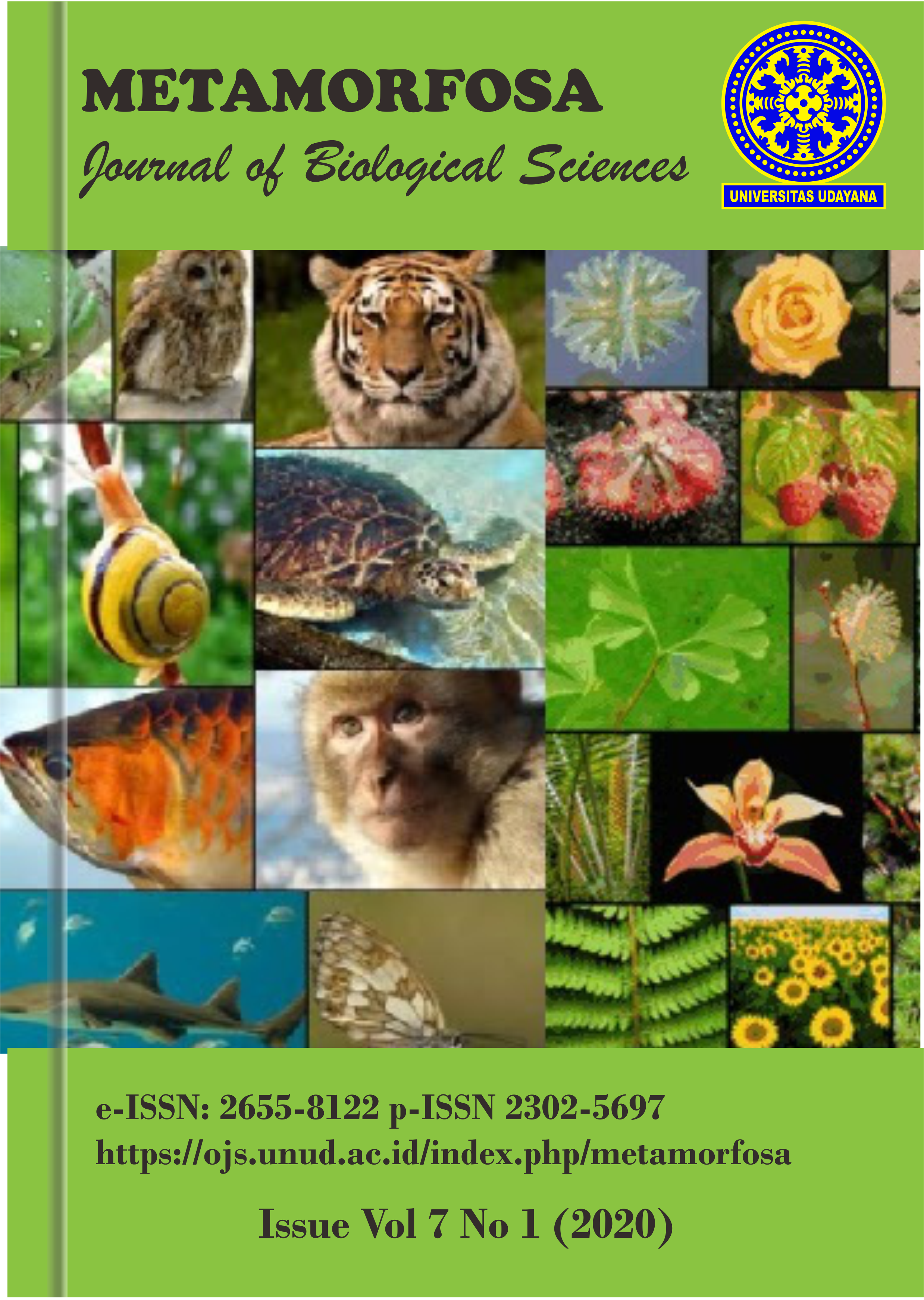Potential Of Dewandaru Leaf Extract (Eugenia uniflora L.) As Bacterial Control Agent Of Bacillus cereus ATCC 11778 CAUSE Of Diarrhea
Abstract
Eugenia uniflora L. is a medical plant that can be used as a medicine for diarrhea. Exploration of antibacterial compounds from natural material can resolve various diseases that do not give effects of resistance such as the use of antibiotics. Research purposes are to know the potential of dewandaru leaf extract as an agent bacteria control of Bacillus cereus ATCC 11778 that causes diarrhea and to determine the active compounds contained in dewandaru leaf extract. The method used in this study was a Complete Randomized Design (CRD) with 7 treatments for the concentration of the dewandaru leaf extract of 1%, 2%, 3%, 4%, 5% (b/v), positive control (amoxicillin), and negative control (ethanol). Determination of inhibition of dewandaru leaf extract againts B. cereus ATCC 11778 is characterized by the formation of the clear zone around paper discs using the Kirby-Bauer method. The results showed that dewandaru leaf extract at the highest concentration (5%) was able to produce inhibition zone diameter of 7.15 mm against B. cereus ATCC 11778. Phytochemical test results showed ethanol extract dewandaru leaf contain tannin, saponin, terpenoid, and flavonoid as active compounds. GCMS analysis of the active fraction of dewandaru leaf extract (Fraction II) produced ten antibacterial compounds. The conclusion of this study, ethanol extract of dewandaru leaf was able to inhibit the growth of B. cereus ATCC 11778 in vitro. Concentration dewandaru leaf extract 1% is a minimal concentration as an antibacterial againts B. cereus ATCC 11778. GCMS analysis of dewandaru leaf extract consists of 10 antibacterial compounds such as Dodecanoic acid, Tridecanoic acid, Hexadecanoic acid, Octadecanoid acid, 8-Nitro-11-dodecanolide, Oxiraneoctanoic acid, Oxiraneoctanoic acid, 9-Octadecenoic acid, 9-Octadecenoic acid, and 1.2-Benzenedicarboxylic acid.
Keyword: Antibacterial, Inhibition zone, Active Compounds.





